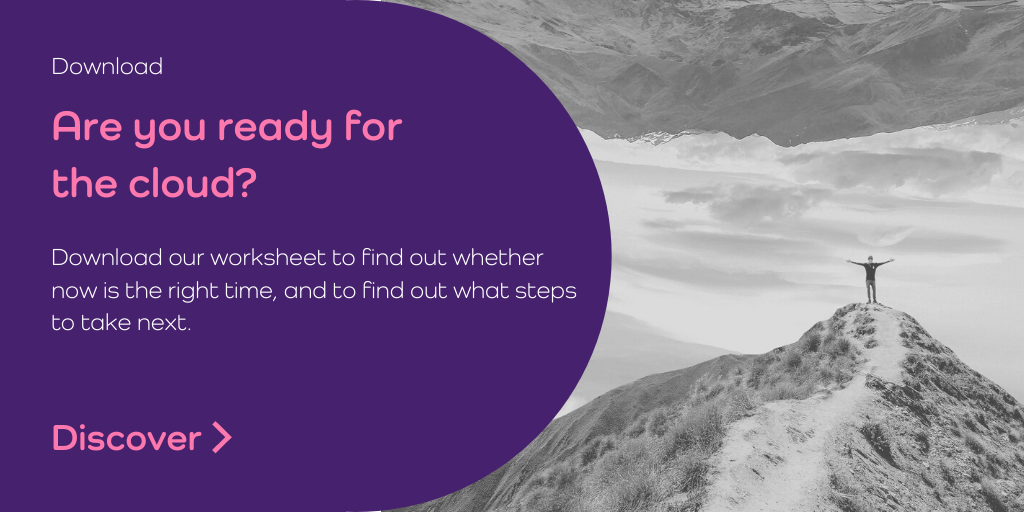Cloud computing offers many benefits for the education sector, but there are also barriers to a successful digital transformation. This has not been helped by the lack of comprehensive guidance from the government, leaving schools and other educational organisations to draw up cloud strategies for themselves.
Fortunately, there are now many good examples of best practice to draw on. Schools are successfully migrating to the cloud and reaping the benefits.
For a successful cloud migration, schools do need to have certain conditions in place. This may involve some changes to the existing IT infrastructure and processes. Below I share the key factors that need to be addressed before migrating to the cloud.
Is your school or institution ready for the cloud? Download our worksheet here to find out >
7 key factors for a successful cloud migration
#1: Optimum connections for all areas of the school estate (high-speed network) – this has been a challenge for many schools with both staff and students often finding that the school network is much slower than their home network or public networks in coffee shops and similar.
#2: Define simple and effective procedures for access – for cloud computing to be widely adopted amongst users, and for the school to get the benefits of this approach, it must be easy for users to access the cloud solutions provided. Defining and implementing access procedures includes everything from Identify and Access Management (IAM) to the availability of devices for staff and students to use. IT support is also an important factor in this; perhaps the most frequent IT support tickets service desk providers see from users in the education sector, are for issues with access. Therefore you’ll need the resources in place to reset passwords quickly and resolve any problems with accessing the cloud solutions as users require.
#3: Quality of content and tools – schools need to put in place processes for reviewing the content and tools available, both for operational applications (back office) and educational resources. This process starts with shortlisting cloud applications, testing and trialling them, and then regular reviews to ascertain the educational or operational benefits and ROI. Digital transformation fails when the cloud solutions deployed are not aligned with your users’ needs and preferences.
#4: Compliance and data protection – school leaders need to identify the data that they manage and store, and understand the compliance and data protection implications of migrating data to the cloud. This may involve keeping highly sensitive data on-premise, stored securely using the school’s existing IT infrastructure, or adding different levels of protection and IAM tools for some types of data.
#5: Cloud strategy champions – schools that form a group to define their cloud strategy, monitor its use and promote cloud solutions to other stakeholders, experience higher adoption rates and see greater ROI. Users need to understand the benefits of using cloud solutions, not just for the school overall but also for their own productivity or performance, they need support and training to get the most out of different applications, and they need to see the results so that they continue to use them. Awareness, training and regular reporting all helps to increase cloud adoption.
#6: Service Level Agreements (SLA) – schools also need to define the criteria for the services they require and what their expectations are. Against this they are better able to measure the success of cloud migration, and assess individual applications and value.
#7: Outsource IT providers – finally, schools also need to put in place processes for managing the relationship between them and their suppliers – cloud and IT service providers. This might be the first time the school has partnered with a outsource provider that they rely on for ‘business critical operations’. Working with a private sector company can also be a new experience and so it’s important to outsource your requirement to a provider that understands your needs, culture and the unique challenges of running a school.
I hope you find the above useful. If you would like to discuss any of the information shared in more detail, or get further advice for implementing these measures ready for digital transformation, please get in touch.







